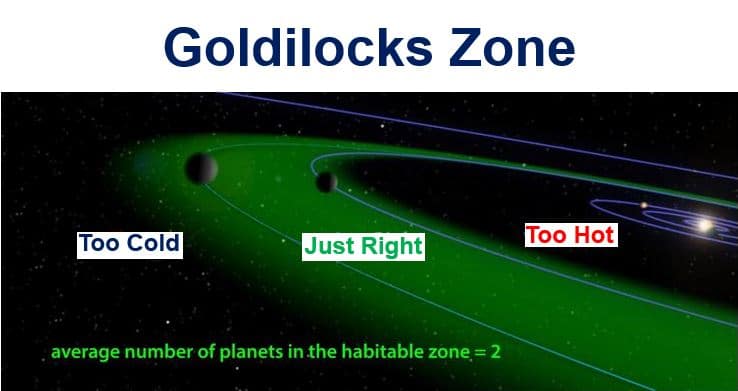Most stars in our Galaxy – the Milky Way – have about two Earth-like planets orbiting them, Australian researchers reported. This means that just in our Galaxy, there are literally hundreds of billions of planets like ours which might support life.
Study leaders, Associate Professor Charley Lineweaver and Ph.D. student Tim Bovaird, both from The Australian National University (ANU), applied a 200-year-old idea to the thousands of exo-planets discovered so far by the Kepler space telescope to make the finding (exo-planets are those outside our solar system).
They found that the average star in the Milky Way has about two planets in the Goldilocks zone, i.e. they are at a distance from their sun which is “just right” regarding surface temperatures and the possibility of there being liquid water, two factors which are crucial for life (as we know it) to exist.

The Goldilocks Zone, or Habitable Zone, means the planet’s conditions are ‘just right’ for liquid water to exist on its surface, and thus the possibility there may be life as we know it. (Image source: Eurekalert)
Associate Professor Lineweaver, who works at the ANU Research School of Astronomy and Astrophysics and the Research School of Earth Sciences, said:
“The ingredients for life are plentiful, and we now know that habitable environments are plentiful. However, the universe is not teeming with aliens with human-like intelligence that can build radio telescopes and space ships. Otherwise we would have seen or heard from them.”
“It could be that there is some other bottleneck for the emergence of life that we haven’t worked out yet. Or intelligent civilisations evolve, but then self-destruct.”
The Kepler space telescope tends to find planets that are too near their stars – they are too hot for liquid water. The scientists extrapolated from Kepler’s results using a theory that was utilized to predict the existence of Uranus.

Associate Professor Charley Lineweaver. (Image: Stuart Hay, ANU)
Associate Professor Lineweaver said:
“We used the Titius-Bode relation and Kepler data to predict the positions of planets that Kepler is unable to see.”
In January, NASA’s Kepler Space Telescope discovered eight new planets orbiting sun-like stars within the Goldilocks zone. Two of them – Kepler-442b and Kepler-438b – were more Earth-like than anything discovered so far outside our solar system.
